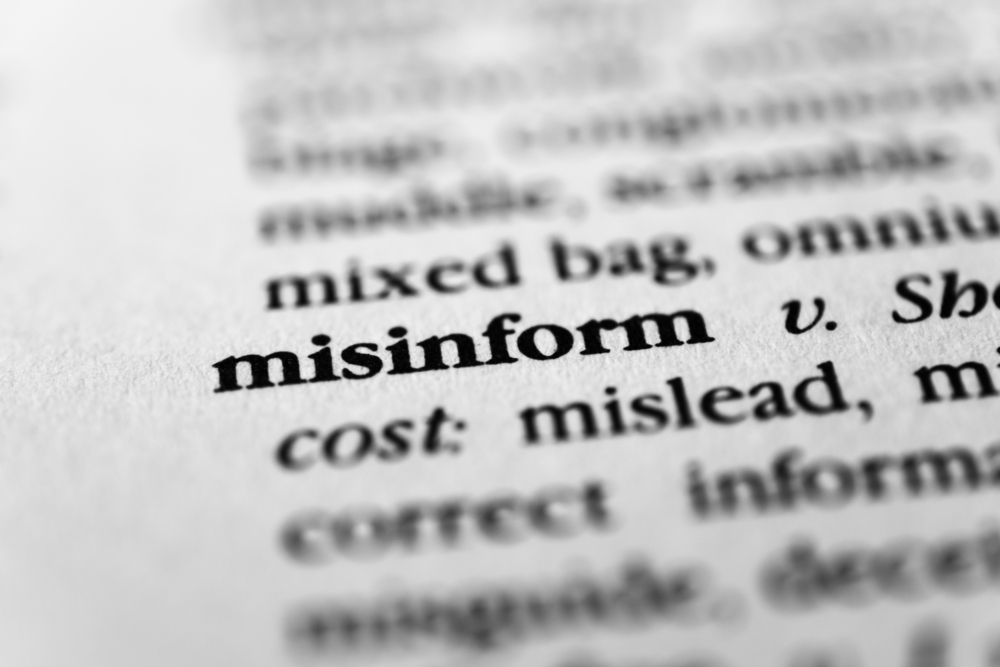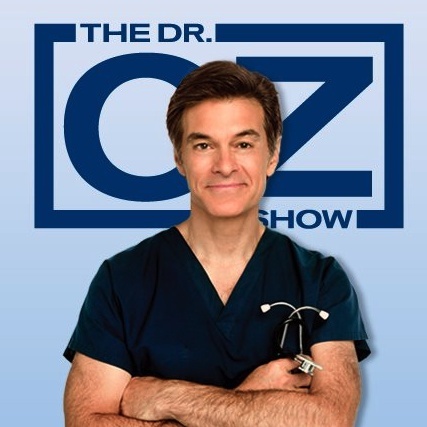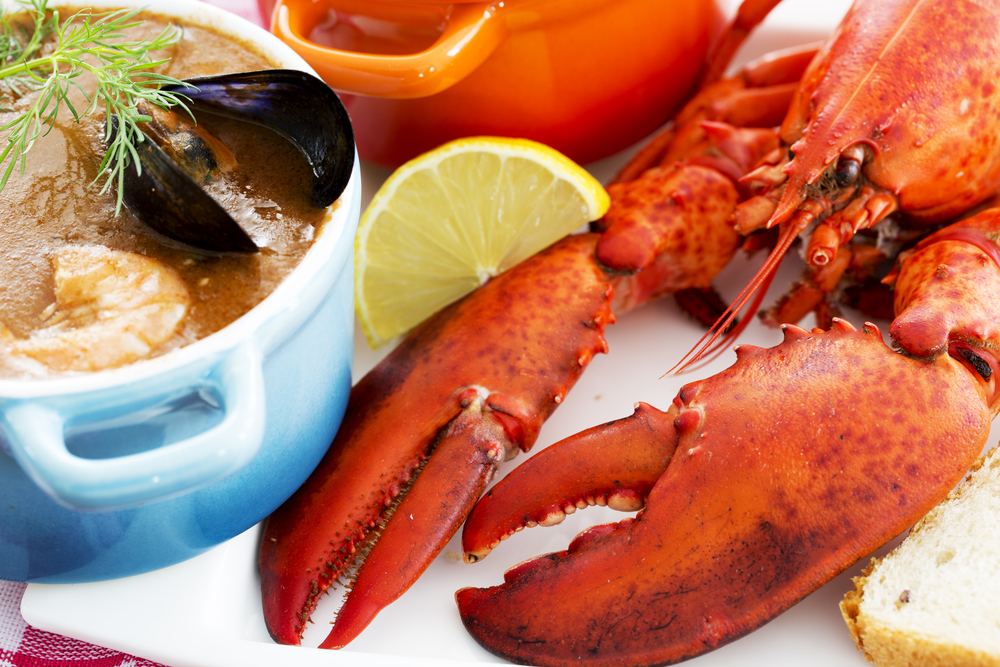All posts by NFI Media
Wannabe Dr. Oz Stumbles Into Trade Story
“Dr. Axe,” an aspiring Dr. Oz but one that lacks the actual MD, has now added his voice to an ongoing conversation about swai, a catfish-like species. Which likely leads you to ask… why?
Perhaps his much-promoted work as a chiropractor for Ryan Lochte bolsters his credentials as a trustworthy source of information about many a sundry things.
It’s clear from the article that Axe is totally ignorant that his unsought and uninformed opinion is being used as part of an international trade issue. The info about swai that he regurgitates without questioning clearly comes from a Washington special interest group that wants to erect a trade barrier designed to eliminate foreign imports of swai.
Because Axe – a “doctor of natural medicine” – has no background in food policy/regulation or trade issues for that matter, he completely botches his argument against swai.
For example: his statement that swai is not regulated the same as catfish is totally wrong. All silurforms, including catfish and swai, are regulated by the United States Department of Agriculture, using the same exact standards. That is not an issue that is up for debate in any manner.
It’s embarrassing that someone who would love the public to believe he is a medical doctor has involved himself, unknowingly, in a trade issue that has nothing to do with nutrition, food safety, or natural medicine for that matter.
When choosing a doctor, we suggest sticking to board-certified physicians that are high in credentials and low in special-interest rhetoric.
NY Post article is a seafood scam
The New York Post is known for sensational headlines and attention-grabbing images – and the iconic outlet can be as bombastic as News Corp desires as long as its reporters adhere to basic journalism ethics… like reporting facts. But when the NY Post turns to hyperbolic headlines and reports with demonstrable inaccuracies, it does a disservice to readers and marginalizes the paper.
An article this week called “Everything we love to eat is a scam” contains numerous inaccuracies about seafood that are so ridiculous, the piece seems like a parody.
- The article discusses a lobster bisque from a restaurant that contained a seafood species called “langostino.” The article claims this seafood product is “a non-lobster meat.” Perhaps the NY Post should check the FDA acceptable market name for langostino…which is in fact “langostino lobster.” It’s unclear what evidence the reporter uses in her claim that langostino isn’t a form of lobster meat, but it certainly isn’t information from the federal government or the international food standards community (Codex).
- Discussing sushi, the article alleges that “you’re not getting the sushi you ordered, ever, anywhere.” Really NY Post? That’s not an exaggeration for effect – that’s just wrong. The author goes on to claim, “Your salmon is probably fake and so is your red snapper.” What does that even mean? Whether it’s lazy journalism or designed hyperbole, the broad-brush allegations go without any cited studies or data to back them up.
- Staying on snapper, the article says, “Red snapper, by the way, is almost always fake.” Clearly the reporter has done minimal (if any) research on this subject. If she did, she would have found the FDA’s recent DNA analysis targeting seafood species that are more likely to be substituted – including snapper – at the wholesale level. The results showed that the fish were labeled correctly 85% of the time. Meaning there was a 15% chance a fish was mislabeled. But if you’re a NY Post editor, you don’t flag a 15% chance being akin to “almost always.”
- The suggestion that FDA “is responsible for inspecting just 2 percent of [seafood] imports” illustrates a fundamental lack of knowledge about the seafood community and how it is regulated. Both domestic and international companies providing seafood to Americans have to comply with FDA’s Hazard Analysis and Critical Control Points (HACCP) regulatory system, an internationally recognized risk-based model that seeks to solve challenges along the supply chain at multiple “control points.” Unlike other regulatory programs, there isn’t an “end of the line” inspection, but control points all along the supply chain. The 2% inspection number is in addition to the HACCP plan. This claim by the NY Post about FDA inspections is sorely lacking in perspective.
We can’t say we’re surprised to see a NY Post article rife with rhetoric, but it’s still disappointing to see such blatant falsehoods about the seafood community make it all the way through the editing process. The NY Post cheapens its paper by choosing sensationalism over science.
Wall Street Journal Catfish Editorial: “This should be an easy call”
A Chance for a Catfish Vote
Failing to repeal would set up a WTO showdown that the U.S. could lose.
July 6, 2016 3:52 p.m. ET
Will the U.S. House of Representatives get to vote this summer on repealing the notorious catfish program that has become a byword for Washington waste and protectionism? This should be an easy call, especially after the Senate voted for repeal in May, but a group of Southern lawmakers are pressuring Speaker Paul Ryan to keep the issue off the floor. Even for Congress in an election year, this is an especially fishy case of special-interest pleading.
For 15 years Mississippi Republican Thad Cochran has led Congress in throwing up regulatory barriers against catfish imports, mostly from Vietnam, that compete with catfish farmed in the Mississippi Delta. These efforts culminated in March, when catfish oversight shifted from the Food and Drug Administration (FDA), which regulates all other fish, to the Department of Agriculture (USDA), which regulates meat and poultry. This made no public-health or fiscal sense, but that wasn’t the point.
“No one was concerned about the safety of catfish until Southern catfish interests determined the USDA regulatory system would effectively block its imported competition at the border,” former USDA and FDA food-safety czar David Acheson wrote in Forbes last month. “This restriction is based on regulatory differences between USDA and FDA that don’t make the product safer, just more difficult to import.”
Import restrictions mean higher prices at restaurants and stores for what is now America’s sixth-favorite fish, ahead of cod and crab. Where FDA catfish inspections cost $700,000 a year, taxpayers now have to spend $14 million a year on a USDA program that also cost $20 million to start. No wonder the Government Accountability Office has slammed it 10 times, saying repeal would “save taxpayers millions of dollars annually without affecting the safety of catfish intended for human consumption.”
Vietnam may sue at the World Trade Organization, where it can expect to win. That would empower it and other affected countries, such as China, to retaliate against U.S. exports of soy, meat and other products that unlike catfish are pillars of the U.S. farm economy.
At least 195 House Members, including a majority of Republicans, have written to Mr. Ryan asking for a vote on repeal. But 42 others, mostly Southern Republicans, are pushing back with anecdotal claims about unsafe or uninspected fish. But that’s an argument for routine inspections, not protectionism and bureaucratic legerdemain.
The GOP’s catfish holdouts argue privately that a repeal vote would cause needless party tension in an already tough election year. But a majority of Republicans don’t see it that way, and for good reason. Repealing the catfish boondoggle is basic hygiene for a party that still claims to support free markets, responsible regulation and fiscal restraint.
More of the Same from The Dr. Oz Show
To no one’s surprise, Dr. Oz chooses hyperbole and fear-mongering over sound science in a new segment about seafood on his daytime talk show. Dr. Oz and a guy we can loosely describe as a field reporter, Mark Schatzker, who is featured in a previous segment reporting that “[this] taste like lettuce, but just a little bit more like lettuce” together discuss market aspects of both wild and farmed shrimp. Ultimately, their report scares consumers away from shrimp altogether, a real disservice to an audience that is apparently interested in becoming healthier, despite the fact that they’re relying on a doctor probably best known for quackery. Unlike other products Dr. Oz promotes (ahem, green coffee bean extract), shrimp is a low-fat, high protein food that is affordable and accessible to Americans, and Dr. Oz does harm to his audience by leading them away from this healthy product.
There are numerous inaccuracies throughout the various segments and below we highlight just a few.
Dr. Oz claims that wild shrimp has more omega-3 fatty acids than farmed shrimp.
There is no science to back this up. The USDA Nutrient Database (which contains data about omega-3 fatty acid content in seafood) does not differentiate between wild and farmed shrimp. It is well known in the nutrition community that the differences in omega-3s between farm-raised and wild species are negligible, because all fish and shellfish need omega-3s in their diet (whether it be from seaweed, plankton, other fish, or formulated feed) to thrive. The 2015 Dietary Guidelines Advisory Committee (DGAC) Report states, “For commonly consumed fish species in the United States, such as bass, cod, trout, and salmon, farmed-raised seafood has as much or more of the omega-3 fatty acids EPA and DHA as the same species captured in the wild.” In other words, eat a wide variety of seafood. Whether wild-caught or farmed, most species of fish have about the same amount of omega-3s.
Dr. Oz claims less than 4% of shrimp imports are inspected
This demonstrates a fundamental lack of knowledge about the seafood community and how it is regulated. Both domestic and international companies providing shrimp to Americans have to comply with FDA’s Hazard Analysis and Critical Control Points (HACCP) regulatory system, an internationally recognized risk-based model that seeks to solve challenges along the supply chain at multiple “control points.” Unlike other regulatory programs, there isn’t an “end of the line” inspection, but control points all along the supply chain as part of a plan approved by the FDA before a company can sell shrimp to Americans. This is not communicated by Dr. Oz. The success of this food safety system is evident. CDC data shows that out of more than 120,000 foodborne illnesses reported over a five year period, less than 2% were attributable to imported food. And of that number, just 0.12% of the reported illnesses were attributable to seafood. (All seafood, not just shrimp.) Dr. Oz’s broad brush claim about FDA inspections is sorely lacking in perspective.
Aliens who recently landed on earth are the only ones shocked to hear that Dr. Oz continues to produce misinformation by the vat full and then dump it on his unsuspecting audience. Oz’s most recent seafood soliloquy can be filed with so many of his others that range from bizarre to blatantly false.
WSJ Reports on Proposed Lobster Trade Ban in EU
The Wall Street Journal is reporting on a potential ban on imports of live North American lobsters in the European Union. Sweden alleges that a few dozen North American lobsters have been found in European waters over the past decade and have the potential to breed and spread diseases among European lobsters, but the new report highlights continued questions about the merits behind Sweden’s claims and its push for a trade ban.
In the report:
- NFI asks how 32 lobsters found in EU waters over an eight-year period could constitute as an “invasion”
- The Executive Director of the University of Maine’s Lobster Institute addresses the science in Sweden’s risk assessment; stating that the bacterial disease mentioned in the assessment hasn’t been seen for at least 10 years
- A letter from Maine’s Congressional delegation to Secretary of State John Kerry notes that Maine has safely shipped its lobsters globally for decades without incident
- The State Department tells the WSJ that the U.S. government is “working to evaluate the scientific basis of Sweden’s request” and is “in close contact with European colleagues to ensure that legitimate trade is not unjustifiably restricted”
The article ends by noting a Scientific Forum at the European Commission will discuss Sweden’s request in June, and there would be many steps after this meeting before anything would be final.
Read the full Wall Street Journal article here.
A Look at the BSB after 10 Years
A recent article in IntraFish focused on the success of the Better Seafood Board (BSB) in the last 10 years with its work to stamp out economic fraud in the seafood industry. BSB Chair, Jamie Marshall of Trident Seafoods, provided insight about the ongoing work of the organization.
Formed in 2007, the BSB supports the commitment of NFI members to abide by industry principles of economic integrity by not selling seafood that is short in weight or count, has the wrong name, or has been transshipped from one country to another to circumvent duties and tariffs. Marshall highlighted the importance of defining what the fraud really is, because “each issue has distinct challenges.”
The article discussed current efforts of the BSB, which include:
- Providing a 1-800 number for the general public to report suspected fraud
- Working with the National Restaurant Association (NRA) to ensure seafood items are properly labeled on menus
- Ongoing conversations with regulators, like the Food and Drug Administration (FDA)
- Raising the awareness of BSB at industry events, like Seafood Expo North America.
Seafood DNA database grows
A recent article in Smithsonian Insider highlights a scientist’s work on Caribbean conch and lobster using a DNA database.
Nathan Truelove, a postdoctoral fellow in the Marine Conservation Program at the Smithsonian Marine Station in Fort Pierce, Florida, is using genetic sequencing to determine where two species, spiny lobster and queen conch, have been caught in the Caribbean. Because these species can migrate and live in different regions of the Caribbean, DNA samples can be tested to determine where the catch originated.
Truelove and his colleagues have been building a DNA database by obtaining small samples from the two species. Once enough genetic information has been collected, the DNA can be sequenced and analyzed. A conch or lobster can then be traced back to a specific country or an area within a country’s waters based on the DNA markers for local adaptation.
The ability to better identify seafood species continues to be a powerful tool.
The full article is available at http://insider.si.edu/2016/03/marine-scientist-developing-dna-database-to-track-caribbean-conch-and-lobster/.
Debunking AOL’s Pregnancy Myth
We read with interest an article featured on AOL (originally on Mic.com) titled: 5 myths about what pregnant women can and can’t eat, debunked.
The first myth debunked is that pregnant women can’t eat seafood. We were glad to see the author highlight the fact that when pregnant women avoid fish, it’s to the detriment of their children – who miss out on important health benefits.
But ironically, the recommendations that follow create more confusion for pregnant women, contradicting the official advice from the Food and Drug Administration (FDA).
The AOL article suggests pregnant women avoid: halibut, cod, tuna, sea bass, bluefish and grouper.
This list is demonstrably false. The FDA advises pregnant women to avoid just four fish: shark, tilefish, king mackerel, and swordfish. These four fish make up less than 1% of all the fish eaten by Americans annually. The FDA also specifically says pregnant women can eat all types of tuna – white (albacore) and light canned tuna. They can eat up to 6 ounces of white (albacore) tuna per week.
The bottom line is that pregnant women should eat 2 to 3 servings of a variety of seafood (including options like tuna or cod) per week to improve babies’ eye and brain development.
Unfortunately, the average pregnant woman currently eats less than 2 ounces of seafood per week, due to confusing and contradicting messages about seafood during pregnancy, like this one featured on AOL. The U.S. Dietary Guidelines for Americans are clear when they say, “the benefits of consuming seafood far outweigh the risks, even for pregnant women.”
Carl Safina exposed as Enviro Bully
CFOOD, a network of fisheries scientists, responded this week to an article in Medium titled, Environmental Bullies, how conservation ideologues attack scientists who don’t agree with them.
CFOOD summarizes the article well:
“Dr. Lutcavage felt [Carl] Safina and other NGOs like Pew Oceans have maligned her and her peers for their research because it would, ‘get in the way of fund-raising campaigns, messages to the media, book sales, rich donors, and perhaps the most insidious – attempts to influence US fisheries and ocean policies.'”
CFOOD contributor John Sibert of the University of Hawaii says that pressure for scientists to change or “spin” research results occurs more often than it should. He shares his most recent experience with pressure that came from a stringer who writes for Science magazine. The reporter’s approach was to play word games with Sibert’s replies in order to make it seem that Sibert’s research supported MPAs; it did not. Sibert repeatedly explained that the research showed that closing high-seas pockets had no effect whatsoever on the viability of tuna populations and that empirical evidence showed that the closure of the western high seas pockets in 2008 had in fact increased tuna catches.
Sibert summarizes with great advice:
“Instead of attacking the messenger and implying that Lutcavage and her colleagues are industry tools, Safina should have embraced the science, supported tuna conservation, and applied pressure in ICCAT to change its antiquated management. By attempting to smear Lutcavage and her NOAA colleagues, he demeans science in general and those of us who try to apply scientific approaches to resource management in particular.”
Canadian OpEd: Will fish be on the menu at upcoming State dinner?
An OpEd in The Hill Times, a Canadian paper covering politics, emphasizes efforts by the Canadian fishing community and government to eliminate Illegal, Unreported, and Unregulated (IUU) fishing globally – efforts that “are recognized as world-class.” The OpEd also highlights Canada’s impressive economic integrity record when it comes to labeling seafood. So why does the U.S. State Department appear to be accusing Canada, a trusted and reliable trading partner, of fishing illegally? Read the full OpEd here.












